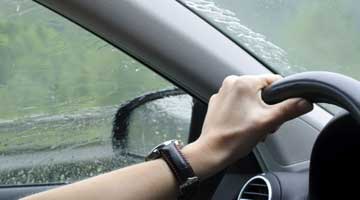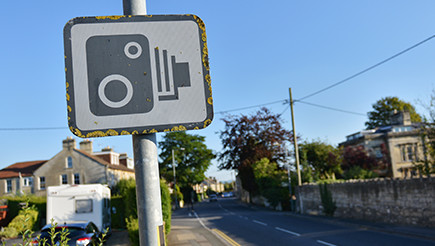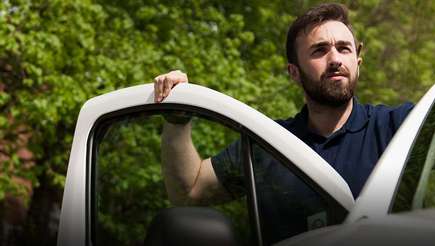From freezing conditions and high winds to blankets of snow and lashings of rain, driving your van in the Great British winter weather comes with its own set of challenges that can be tricky to tackle.
So, to help protect you, your van and your wallet as the mercury begins to plummet, we’ve rounded up some top tips to keep in mind when hitting the highway this winter.
Keep an eye on fuel levels
Your van is likely to guzzle more fuel in cold weather, so it’s a good idea to pay extra attention to your fuel gauge when you’re out and about in cold weather. It might seem like common sense but by ensuring you don’t risk running the fuel tank low – or worse, completely empty – the less likely it is that your van will come to an unexpected stop on a dark road or in stormy weather.
Planning is power
The more you know about the potential obstacles ahead of you, the better you can prepare. Plan ahead by looking out for Met Office weather forecasts of your chosen route and opt for alternative routes if necessary, sticking to main roads as much as possible.
Make sure your phone is fully charged before hitting the road and consider investing in an in-vehicle charger, which could be a big help in keeping your friends, family and clients updated on how your journey is progressing. Just remember to not touch your phone while driving. And keep an ear out for local news bulletins on the radio to remain up to speed with road closures.
Remember, if the weather is set to take a turn for the worse, decide if the journey is really necessary. Your health and safety is much more important than taking a risk on the road.
High gear, low revs
Keep the above in mind when setting off in your van in wintery conditions. During snowy conditions, staying in as high a gear as possible and keeping your revs low makes it less likely that your wheels will spin before driving off. If you’re driving on the motorway, try to stay in a higher gear to increase control.
Get to grips with stopping distances
Establish safe stopping distances between your van and the vehicles in front of you. If you’re driving in wet weather, try to leave double the distance between you and vehicles ahead than you would for dry roads. For snow and icy conditions, this stopping distance should be up to 10 times greater. Take a look at the Highway Code’s advice for more information on stopping distances according to vehicle type, situation and weather.
There’s no need for speed
Driving in winter weather means keeping tabs on your speed so that you can better react to any problems in front of you. When approaching a bend in the road in your van it’s a good idea to reduce your speed as much as you can by braking smoothly before turning the steering wheel to reduce your chances of skidding.
However, if you’re unlucky enough to lose grip in icy conditions, try to keep calm while releasing your foot from the accelerator and gently steer into the skid. For example, if the back of your van is rearing to the left, steer to the left while keeping your hands on the steering wheel and your foot off the brakes.
Pre-empt puddles
When it comes to driving in heavy rain, try to steer clear of puddles as even seemingly harmless shallow puddles can lead to aquaplaning. If your steering feels light and you do find that your van is aquaplaning, to regain grip avoid slamming on the brakes or jerking your steering wheel. Instead, keep a firm grip on the wheel, gently steer the van in the direction you want it to go and ease off the accelerator until you regain control.
Let there be lights
When it comes to driving in heavy snow and rain and dully wintery conditions, it’s important that you make sure that you use your dipped headlights – especially as daytime running lights aren’t bright enough to make your van stand out in winter gloom or activate its rear lights. According to the Highway Code rule 226, when visibility drops below 100m (roughly the length of a football pitch) it’s time to turn on your fog lights. However, remember to keep in line with the Road Vehicles Lighting Regulations 1989, which prohibits the use of front and rear fog lights in drizzle and rain or when a vehicle is parked.
Don’t get dazzled
Sun and winter weather isn’t the first combination that springs to mind, but glare from the sun can be an issue at any time of year. To avoid being dazzled by low winter sun, keep a pair of sunglasses in your van at all times and make sure that your windscreen is kept crystal clear to prevent glare, taking time to slow down if your visibility is significantly impaired.
Factor in extra time
Allowing extra time to get your van shipshape for the day ahead is even trickier to do when the darker mornings creep in but try to incorporate simple checks into your daily routine. For example, if there’s been heavy snowfall, legally you need to ensure that your roof is cleared to prevent it falling off when you brake as it could cause problems for other drivers. Spend time ensuring all your windows, mirrors and lights are free from frost, snow and other obstructions to help maximise visibility and ensure you’re legally compliant before setting off.
When it comes to driving in winter, slowing down and taking extra care is imperative to protecting you and your van as the cold creeps in. From avoiding puddles, keeping a pair of sunglasses on hand to guard against low level glare and getting to grips with safe stopping distances, there are plenty of easy steps you can take to help you steer clear of trouble.
Looking for advice on how you can safeguard your van before you head out on the highway? Take a look at our fool-proof tips on fortifying your van against the winter freeze.






